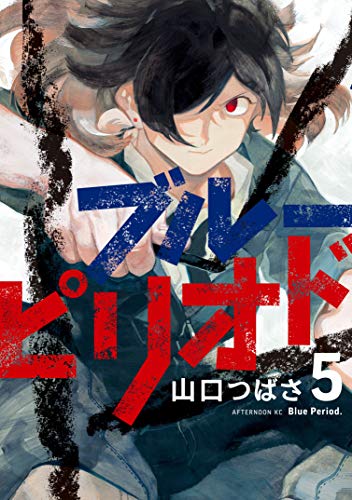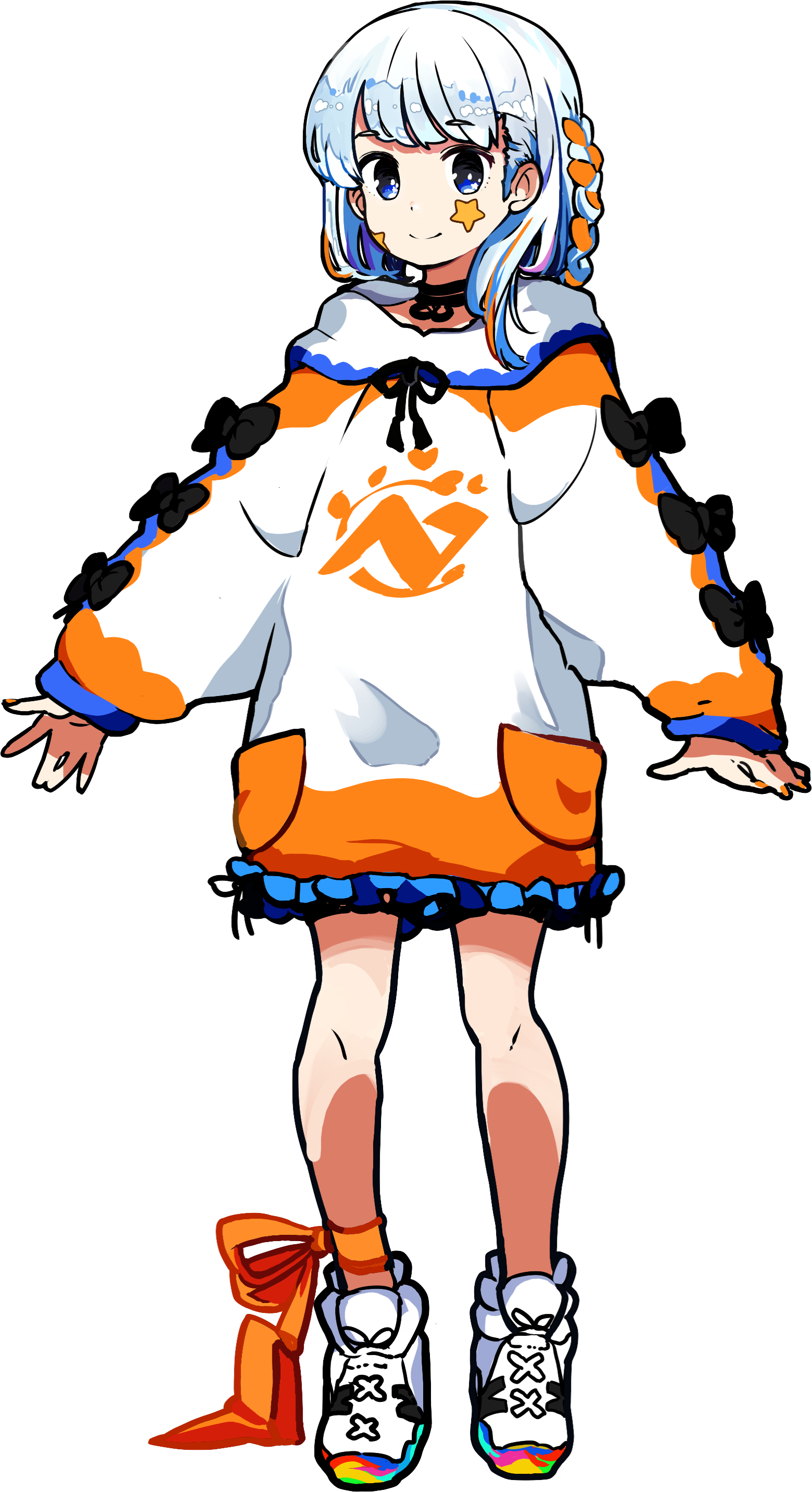Does yaguchi makes it to the art school??

Among manga lovers, “Blue Period” is gaining a reputation as “interesting! Blue Period” is gaining a reputation among manga lovers. It is a coming-of-age story of high school students aiming to enter art universities, including Tokyo University of the Arts. The title “Blue Period” is a word derived from the famous painter Pablo Picasso. Initially, it referred to the style of painting that Picasso did in his youth, and then it became a term to describe anxious adolescence. As the name suggests, this is a fresh and sometimes painful coming-of-age story. The author, Tsubasa Yamaguchi, is a graduate of Tokyo University of the Arts. Based on his own experiences, this is a realistic manga about taking the entrance exam for art college!
|Synopsis of Blue Period
Yaguchi Yatora is a sophomore who is enjoying his high school life, hanging out with his friends until morning. Despite this, he excels in his grades at school. Because he is able to do everything without a hitch, he was unable to set a goal in life, but by chance, he found the world of art. A painting by a senior student inspired him to start painting, and eventually he began to study in earnest to enter the oil painting department of Tokyo University of the Arts, the most difficult course to enter.
In this story, he goes from the art club at school to a preparatory school for art university entrance exams, where he meets students full of individuality and is inspired to move forward.
|Characters in Blue Period
Here are some of the characters from Blue Period, divided into the campus and the prep school.
■within the school

Yaguchi Yatra
The protagonist of this story. He is in his second year of high school at the start of the story. As he moves on to the third grade, he decides on Tokyo University of the Arts as his school of choice and starts attending a preparatory school specializing in art universities. His duality as a blond-haired “delinquent” but an “honor student” with excellent grades and a good sense of humor is foreshadowed later in the story. He shows a different side of himself only when he has a fight with Ryuji.
Ryuji Ayukawa
Yuka-chan is a second-year student in the art club (at the start of the story) who wears a skirt and has long hair to school. He is called “Yuka-chan” by his classmates, after Ayukawa’s middle name, and is on good terms with Yatora, sometimes fighting with him but sometimes giving him courage. Her first choice of school is the Department of Japanese Painting at Tokyo University of the Arts, and she and Yatora start attending a prep school specializing in art school.
Ms. Saeki.
Advisor of the art club. She is an elderly female teacher with a gentle demeanor, but she is the type of person you can never be too sure of, as she smiles and gets to the heart of things. She is one of the adults who guides the troubled Yatora.
Senpai Mori
One year older than Yatora. A petite and cute type. He is the best student in the art club, and passed the recommendation test for Musashino Art University with flying colors. Even after becoming an art student, he continues to be Yatora’s admirer.
Yatora’s playmates. They are nice guys who are willing to support Yatora’s efforts to take the entrance exam for the University of the Arts, without shunning him because he has gone to a different world from theirs. The one with glasses is Utajima, the small and burly one on the right is Junda, and the tall one with all-backs is Koi-chan. Inspired by Yatora, Koi-chan decides on her own path.
■prep school
Takahashi Yosuke
A boy of the same age as Yatora, whom he meets during a winter course at Tokyo Bijutsu Gakuin (Tokyo Bijutsu Gakuin), a preparatory school specializing in art college. He is the type of person who rejects others, and Yatora is baptized by him as soon as they meet. In his third year, Yatora and Yatora end up in the evening class of the oil painting department at the Tokyo National University of Fine Arts and Music. However, Yatora gradually becomes dissatisfied with the prep school.
Haruka Hashida
A boy with an Osaka accent who attends the same high school as Seda Suke. He meets Yatora in the oil painting department and evening class at the Tokyo National University of Fine Arts and Music. He likes to appreciate other people’s works, and is looking forward to seeing many students’ paintings when he takes the entrance exam to Tokyo University of the Arts. She has a generous personality that keeps a smile on her face, and she shows her unique sensitivity in her paintings.
Maki Kuwana
A girl who has been with Yatora since the winter semester. She is a thoroughbred whose family all graduated from Tokyo University of the Arts, and her talent for drawing is the best in Yatora’s class. Her talent for drawing is the best in Yatora’s class. However, she is overly conscious of her older sister, who is currently a student at the University of the Arts (and has passed the exam at the top of her class). She is a cheerful and friendly girl, but sometimes she has a dark side that makes you nervous.
Oba
A teacher at the Tokyo University of the Arts. At the first private meeting, she tells Yatora that it will be difficult for him to pass the entrance exam to the University of the Arts. Her precise guidance is a real eye-opener not only for Yatora but also for us readers.
|What do you do to study for an art college exam?
What kind of place is an art college, anyway?
It’s okay if you don’t know anything about art school entrance exams. Blue Period” will gently guide you through the process. The first scene is when Yatora, who is interested in painting, is helping out in the art club and chatting with the staff. Yuka-chan and Mori-senpai start lecturing her about what art school is like.
Mori showed me a wide variety of successful works from different departments at art universities. The content of the exams is also quite different, he said.
Not only Tokyo University of the Arts, but all the art colleges in “Blue Period” have real names. This is also very realistic.
Tokyo National University of Fine Arts and Music has the highest examination ratio in Japan!
Dr. Saeki joins Yatora and Mori for a chat, and a lecture about Tokyo University of the Arts begins.
As for the oil painting course, the ratio of current high school students who are accepted is a whopping 60 times! “Mr. Saeki says, “It’s a world where it’s normal to be a second or fourth year student.
On top of that, Dr. Saeki smiles and gives Yatora a push.
There it is, the tuition problem! Private art colleges cost about 1.6 million yen per year. Private art colleges are about 1.6 million yen per year, but the University of the Arts is about 500,000 yen, so Yatora decided to focus on the most difficult one, the University of the Arts, considering her parents’ financial situation.
Go to a prep school that specializes in art school!
Yatora was shocked to find out that his senior, Mori, who was the best student in the art club, came in fifth from the bottom in the critique at the prep school, and that was when he first became aware of the existence of prep schools specializing in art school. When he was promoted to the third grade, he finally got his parents’ approval and started attending the evening class of the Tokyo National University of Fine Arts and Music’s oil painting course in earnest.
What is the entrance exam for Tokyo University of the Arts?
Yatora’s grades are excellent, so he should have no problem with the center exam. I’m going to put all my energy into the first round of sketching.
The entrance examinations at Tokyo University of the Arts are full of outlandish tasks. It varies considerably from year to year, so whether or not you can find an assignment that suits you is “to put it bluntly, luck,” says Hashida.
In volume 4, it’s finally time for the exam. The students are depicted with a sense of tension.
|Highlights from The Blue Period
Yatora’s seriousness is so cool!
Yatora has found his purpose in life by getting lost in the world of art, and he is cool in every scene when he is painting.
Encounters with pictures
This is the scene that first drew Yatora in, when she gasped at the green-skinned women painted on the large F100 (portrait size 100, 162.1 cm x 130.3 cm) campus. The artist of this painting was Mori-senpai.
Immediately after seeing Mori’s painting, Yatora was approached by Mr. Saeki. The words, “Art is not writing, but a language,” would remain in his mind forever.
The first work
Yatora is earnestly working on his art class assignment, “My Favorite Landscape,” in which he paints an empty blue cityscape of Shibuya, where he played until morning, in his own way. This is a beautiful representation of his mental image at that time.
“When his friends understood the “blue landscape of Shibuya,” Yatora burst into tears, saying, “I felt like I could have a proper conversation with people. His life is being colored by art.
A piece of persuasion.
In order to convince her mother to let her apply to Tokyo University of the Arts, Yatora sketches her mother. As Yatora looks at her mother to draw her, she realizes once again how much she cares for her family in her daily chores. Yatora’s honest words penetrate her mother’s heart.
Summer classes start. First competition
The atmosphere of the summer course is completely different from that of the evening course, where only active students attend. This is where Yatora tries his hand at his first competition at the prep school. It is here that he sees the students using not only paints but all kinds of other materials as art materials, and his eyes are opened.
I’ll kill them all with my drawing.
Of all the great Yatora scenes, this is by far one of the coolest! When Setasuke says, “You didn’t have to do art…! and his frustration explodes. I was scared to death to bet everything on a painting. But it’s the only thing I can do now.
For me, the edge is shaped like metal.
At that time, Ms. Saeki suggested that Yatora try to draw an F100 painting in the art club. Yatora tackles the theme of “edge”, which he was unable to express well in his assignment at the Tokyo National University of Fine Arts and Music, in the large size of F100. He grasps something new.
What Yatora lacks
In less than two years since he started painting, Yatora has grown rapidly, but there is one big obstacle that he just can’t overcome. However, there was one big obstacle that he could not overcome: his lack of what Mr. Ohba calls “selfishness. In other words, Yatora, who has always lived his life by reading the world, is now being questioned about his life itself. How will he overcome this challenge with his pictures?
And the first exam of the University of the Arts!
The first exam for the University of the Arts is finally here. Yatora gets into some trouble at the exam room. However, it gives him an idea. The rest is a battle against time. Good luck!
The power of mindlessness that Yatora displays when the time comes. It’s so cool!
High school students aiming for art school, each with their own deep drama!
Yatora and Seda
Yatora and Yodaosuke develop a particularly complex relationship, which is one of the highlights of the film. First, they meet. When Yatora casually approaches Sedaosuke, she receives this response (laughs).
Yatora became aware of Sedaosuke’s genius during a winter course at Tomei, and in their junior year, the two meet again at Tomei’s night club. In their junior year, the two meet again at the night school of Tomei, but Yatora finds that Seda is as hard on Yatora as ever.
This is because Yatora seems to be “the one who has everything” to Sedaosuke.
At the same time, Yatora is getting frustrated with Tomomi’s teaching.
To Yatora, Yatora is a “genius” who is different from her. To Yatora, Yoda is a “genius” who is different from her, and to Yatora, Yoda is a person who can adapt to society and survive (also to Tomomi). The two are aware of each other, but they may have a very complicated rivalry.
Yatora is happy when Setasuke says, “You’re annoying me when I watch you.
Yuka’s (Ryuji’s) suffering
Yuka is cheerful, cute, and popular with both men and women. This scene in volume 2 is the beginning of his drama.
Could it be that cross-dressing and art are armor that protects Yuka’s heart?
Yuka-chan made a decision in volume 4. When Yatora finds out about it later, she worries about what will happen to him, but Yuka, who knows Yatora well, shuns her.
When Yatora is hurt, Hashida gives her some advice that is too good to be true.
In the middle of the entrance examinations for the University of the Arts, Yatora and Yuka board a train to see the ocean at night. When they arrive at the place, Yuka reveals her hidden feelings to Yatora. It is a touching scene where Yuka, who has been in pain for a long time, starts walking again. This is a touching scene.
Maki is very conscious of her sister.
Maki Kuwana has an older sister who passed the entrance exam to the University of the Arts. And since she lives with her parents, she can’t help but be aware of her. It’s no wonder that she feels that her sister is the biggest pressure on her to take the entrance exam for the University of the Arts.
Maki is basically a smiling, affectionate girl. In a casual conversation with Yatora, she makes a comment that makes me cringe.
This is the tragedy of those who are close enough to be compared in terms of superiority and inferiority. That is Maki.
To be honest, I think Yatora looks really cool in these situations. He seems to be popular.
Detailed explanations of painting and practice methods are also provided.
Painting requires not only sensitivity but also study. As Yatora’s skills improve, the challenges he faces become more and more sophisticated.
Various aspects of perspective
Perspective is a way to add depth to a two-dimensional picture. There are so many different techniques.
What is a sketch?
Mr. Saeki says that sketching is “a method of training to grasp form, space, texture, and to improve observation and technical skills. He then gives us the following advice.
What are the painting materials for oil painting?
For those of us who have never been exposed to the world of art, oil painting is much less familiar than watercolor painting. What kind of materials do you use and how do you paint with them? As I watch Yatora, who started out as a complete amateur and is now aiming to study oil painting at the University of the Arts, I learn more and more.
All great paintings have good composition.
Teachings by Mr. Ohba. What is a good composition, he says, can be divided into five geometric forms. His lecture on composition, which starts here, is very interesting.
Depth of Color
After overcoming certain difficulties, Yatora takes on the challenge of getting to the bottom of “color”. Professor Ohba’s lecture on “color” begins.
Color is such a profound world!
Even if it starts with just three colors, it can change infinitely depending on the relationship, amount of distribution, shape, composition, materials, light, skin, and many other factors.
By the way, who draws the pictures in “Blue Period”?
The characters in “Blue Period” draw pictures all the time. And each character has a different sensibility and skill. Whenever their drawings appear in a panel, you will notice that someone’s name is written on the side of the panel. For example, the first plaster drawing by Sedauke was done by Chiharu Otsuka. In addition to the author, Yamaguchi-sensei, many other artists are responsible for the characters’ artwork. Blue Period” is a work that is made up of many “painters.
|The Future of “Blue Period
Blue Period” is currently in its fifth volume and is in the midst of the entrance examinations for the University of the Arts. The story is full of tension, and I can’t take my eyes off it. However, taking the entrance exam is only a matter of overcoming one obstacle, and Yatora’s life as a painter is just beginning. In one of his interviews, Mr. Yamaguchi said, “I really want to do a manga about the art world. It will be interesting to see how far “Blue Period,” about young people living in the art world, will go!
|Thoughts on “Blue Period”?
Lots of comments of sympathy! Here is a selection of comments from our readers.
Thoughts on “Blue Period” Volume 1
At first glance, the protagonist is a perfect guy (studious, witty, and a communicative yankee) who is completely different from myself, but I could really relate to the negative emotions of anxiety, emptiness, and self-sabotage.
The pictures are just beautiful. I really like the combination of watercolor-like gray processing, manga-like tone, and solid color without being disagreeable. I think it’s worth watching for that alone.
In 2017, a major new work is coming out just in time. It’s great that the heart pounding of drawing pictures and making things, which is so fleeting that you feel like crying, is depicted in a way that is not too cold but not too hot, with a really exquisite sense of temperature. It’s really just the right balance, and that’s what makes it overwhelmingly different from other works with the same theme. It’s hard to go back to such a fundamental feeling of “those days” because manga artists tend to put too much into this subject. I was only able to remember.
It also reminded me a lot of the days when I went to art college prep school. …… is good. It’s good that the story develops so quickly. And then there’s Yatora. He’s cute. This work is BL. It’s a BL story about art and Yatora-kun.
What do you think of Blue Period, Volume 5 (the latest)?
Just because you are a student taking an exam doesn’t mean that society will look after your efforts. The persistence with which the manga depicts how tattered and torn the manga is is what makes it so great, and I think that’s why it will continue to show us thick human drama even after the exams are over. I’m now looking forward to the time when Hashida will be delved into.




